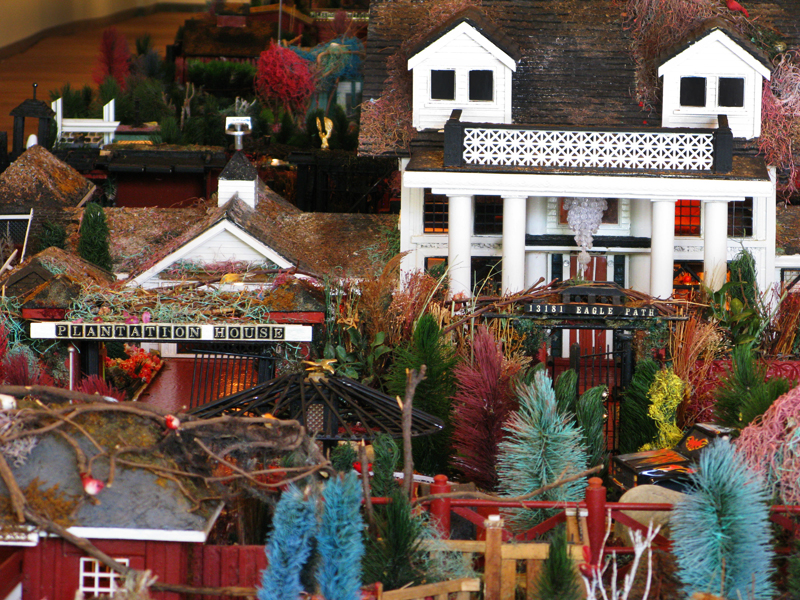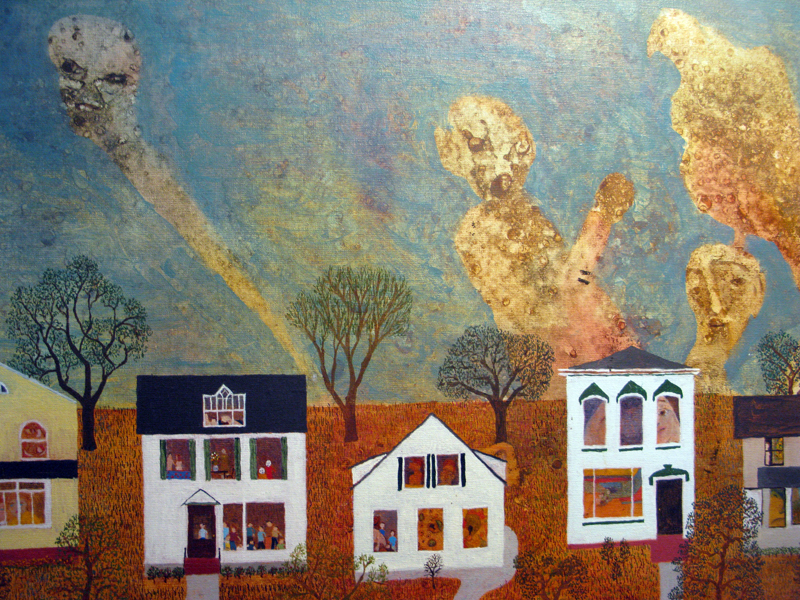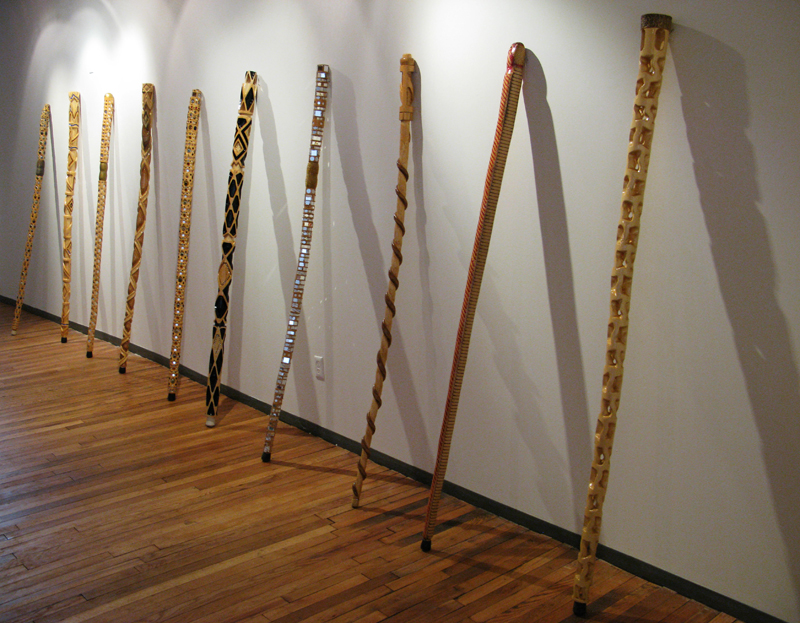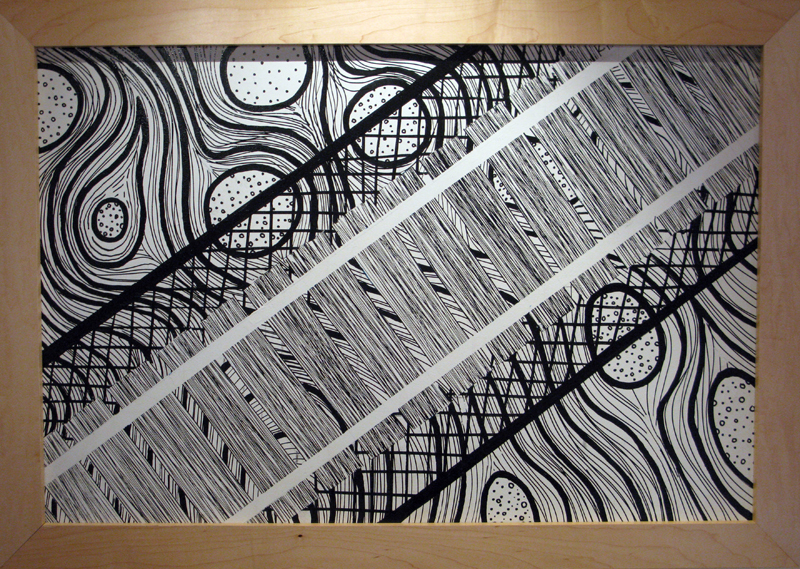
Coming “Home”
The first piece you’ll see when you check out “Homeland,” the show on view at the N’Namdi Center for Contemporary Art until August 20, is Jother Woods’ astonishing, 52-foot long installation “Plantation House.” The dense miniature world, full of buildings, vehicles, avenues and landscaping constructed mostly from found materials, is a testament to the imagination and talent of its warm, inviting 82-year old creator, who was there in shirt and tie when I visited the gallery. Woods explained that the piece reppresents a fictional world based on his personal history and the future he imagined for himself as a young man. The story begins as his life did, in rural Louisiana in 1929, where he shared a single room in a crowded house with four brothers. Woods eventually moved to Detroit and became a sign painter; his imagined self met a different fate, building a trucking empire and the resplendent, titular house that is the centerpiece of the installation.
Woods’ work, begun in 1963, is a scene-stealer. (Click here for a more thorough, must-read description of it in the Detroit Blog.) Its details are absorbing; you’ll delight at realizing that those grain barns are old tin cans, those elegant flower pots just upside-down “hot” and “cold” faucet knobs. But don’t neglect the noteworthy work of the other four artists on display, for each of whom the subject of “homeland” conjures something distinctly personal. (I’d recommend two trips to N’Namdi: one for Woods’ intricate world and another for everything else.)
Most striking, to me, were the works by Chicago artists Bill Woolf and David Philpot. Woolf’s oil paintings are all made with the same basic palette of gold and verdigris. A series of three depicts busy small towns, the streets crowded with cars and the buildings’ windows with bodies and faces. In the central painting, “Evanston, Asbury Street,” huge, unsettling forms emerge from the landscape and loom over the town. In the other two, small, pale bodies tumble through the sky above the buildings, eventually turning into tiny physical objects as they climb miniature, sculptural ladders and ascend outside the paintings’ two-dimensional confines.
Philpot’s work includes beautiful, six-foot tall wooden staffs that have been variously carved, painted and embellished (with stones, mirrors and, in one case, penetrating eyes that seem to see everything at once).
Also on display are several captivating, careening paintings by Detroit artist Jerome Ferretti, whose “Monumental Kitty” sculpture is one of the city’s most delightful pieces of recent public art. You’ll find “Only In America,” too, a Schwinn bike transformed by the late Detroit artist James “Slim” Thompson into a massive sculpture, adorned with plastic cups, family snapshots and photos of black pin-up girls. “Soon: A New Life for Our Ancestors,” reads a mournful piece of found text inside the body of the bike. “Killing Millions to Make Millions,” reads another. The word “homeland” evokes complex connotations, and the show at N’Namdi doesn’t shy away from that. For these artists, home means many things: it’s a town full of ghosts, a dream, a place under siege, a land of myth and mystery. But above all, they insist, home is a place of our imagining. “Homeland” is on view until August 20 at the N’Namdi Center for Contemporary Art: 52 E. Forest Ave., Detroit; nnamdicenter.com. 313-831-8700. Open Tuesday through Saturday, 1 to 6 p.m.
Recent Content
-
Artsarticle ·
-
Artsarticle ·
-
Artsarticle ·





